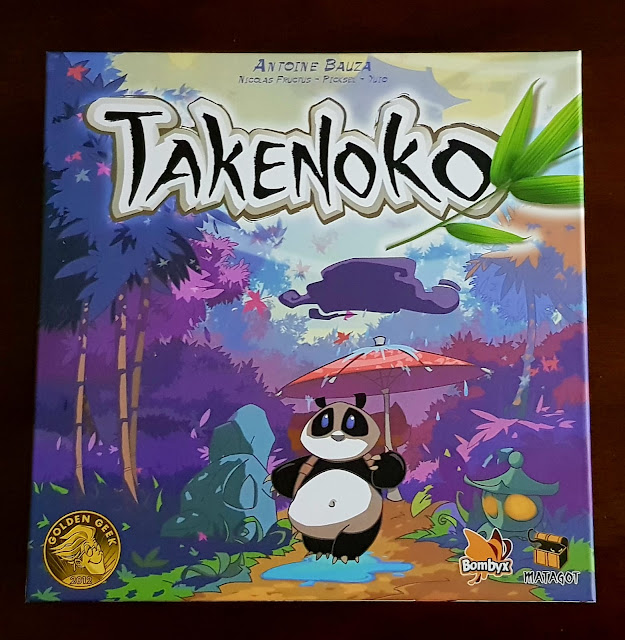Takenoko
Takenoko
|
Designer |
|
|
Publisher |
|
|
Age rating |
8+ |
|
Time |
45 min |
|
Players |
2-4 |
|
Fun |
4/5 |
|
Complexity |
4/5 |
Takenoko - the relaxing yet fast paced game of building a beautiful garden to feed a hungry panda. The game combines beauty with fun, which is probably what most players would want out of a game.
Takenoko has a distinctly far eastern look about it. The garden which will spread around the royal palace during the course of the game is made up of tiles, which are distinct enough to be different, yet similar enough to create a peaceful looking area. These pretty looking tiles are going to be augmented with bamboo, rising up from them. By the end of the game, when the stalks cover a number of tiles, you can’t help but feel like the gardener and the panda, the two main characters, are actually moving through a sprawling bamboo forest.
A nice little detail to the game are two extra tiles that come in the box. They are not terrain, nor do they serve a purpose in the game itself. One of them represents the cover of the game, and the other one shows a happy and fed panda. I have yet to find a person that doesn’t find a fed panda cute.
The gameplay consists of quite a few rules, but it is logical and the rules are easy to learn. Every turn after the first one, the weather dice will resolve the weather effects, and based on those, you might get the ability to use the same action twice. A nourishing rainfall will make the bamboo grow. A lightning might pierce the sky and scare the panda, which will run away and of course, eat the bamboo.
You choose two actions per round. You can either place a new tile, get irrigation canals, as bamboo cannot grow in places where there is no water, move the panda or the gardener, or choose a new objective. All your choices will be directed by these objective cards that you hold. The game ends once you have completed nine of them, and the Emperor himself comes to visit you.
 | |
| The board at the end of a game |
There are no obvious or glaring problems with the game. If I had to mention one thing, it would be that by the end of the game, due to a large number of tiles being placed, it can be almost impossible to complete a tile objective. This is easily remedied, however, by simply choosing a new objective on the next turn. That will, however, cost you an action. The gardener objectives are tricky, but not too intimidating. The panda objectives, on the other hand, are the easiest ones to do, but they bring the smallest amount of points.
As all the players are controlling both the panda and the gardener, you can’t really get into the role of either of them. However, seeing the garden grow as a result of your joint actions brings a feeling of calm, as I’m sure bamboo gardens in real life do as well. The randomness of tiles and objectives ensures that no two games will be the same, and that the garden will always have a different look.
Overall, Takenoko is a wonderful game. It’s not as simple as some other games, but once you get into it, it will quickly become one of your favorites. So play it, and become the landscaper of a beautiful imperial bamboo grove, inhabited by a diligent gardener and a very hungry panda.






Comments
Post a Comment